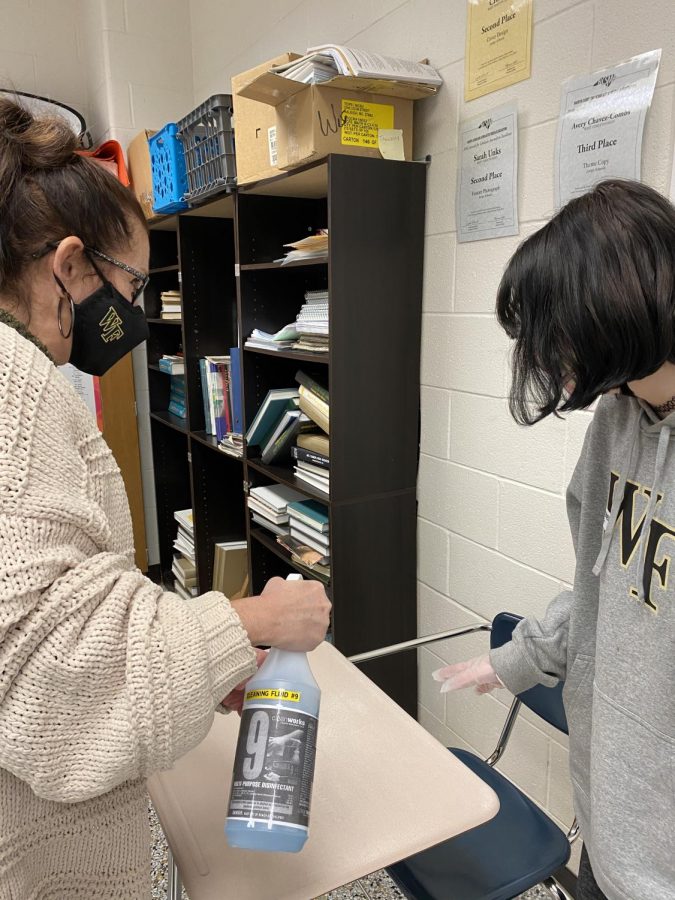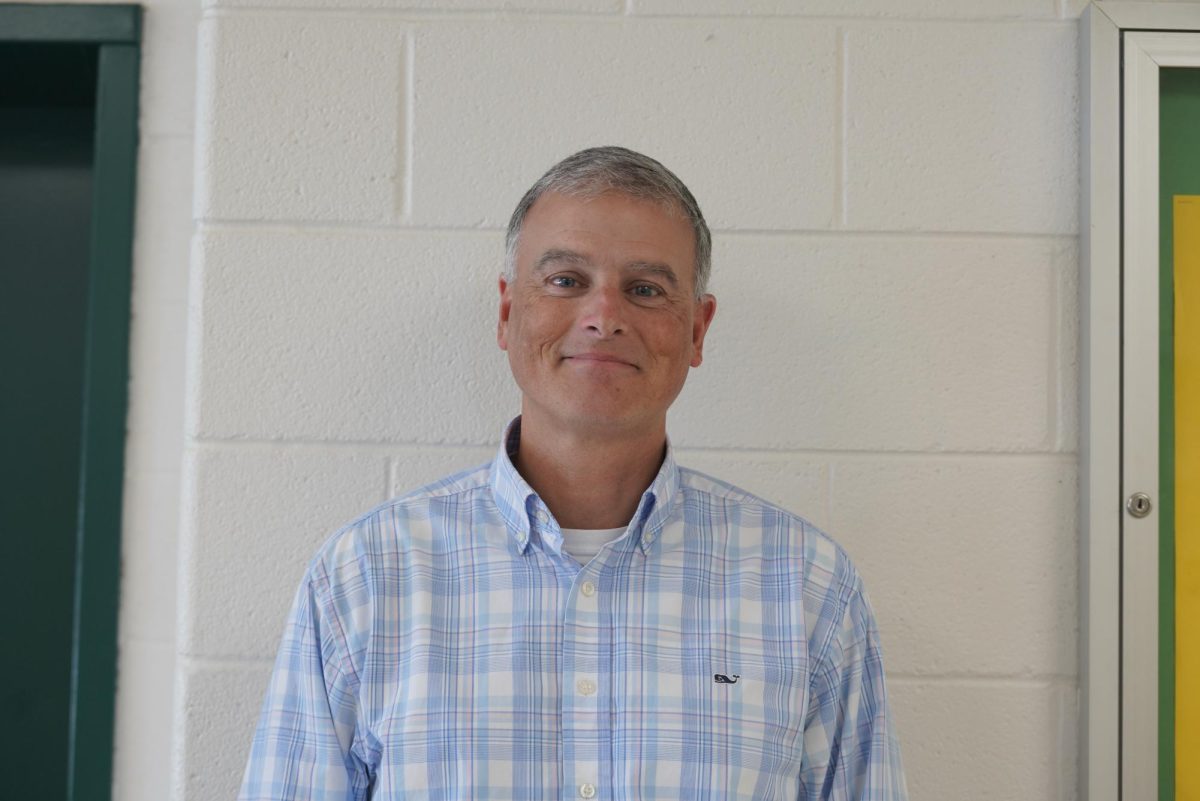Cleaning Covid: Is disinfectant No. 9 toxic?
Multipurpose Disinfectant No. 9 is used by students and teachers on a daily basis. Teachers are told to spray it onto students’ desks, allowing the students to wipe it off themselves.
March 1, 2021
Given the endless amount of cleaners people have been buying in masses, the hoarding of Clorox wipes, and the alarming reports of harmful hand sanitizers, it leaves parents and students alike to question, “are the cleaners even safe if/when my child goes back to school?” With a deep dive into Environmental Protection Agency (EPA) records and toxicology reports, you too can discover what exactly is in the widely distributed WSFCS disinfectant to combat the coronavirus and just how effective this mystery cleaner is.
The two active ingredients in Multi-Purpose Disinfectant No. 9, didecyl dimethyl ammonium chloride and n-alkyl dimethyl benzyl ammonium, are standard products for cleaning non-porous surfaces, such as desks. In fact, they are common chemicals, used in hospital disinfectants and even in nursing homes. In addition, the official Pesticide Product Label includes schools, universities and colleges in its “areas of use” section.
While the Multi-Purpose Disinfectant No. 9 protects against SARS/coronavirus in association with Influenza Virus A/Hong Kong, it appears to only be effective against COVID if left to air dry for at least a full minute before wiping down the surface. To be fully aware of the conditions, directions are listed within its Pesticide Product Label (Pesticide Product Label, FORMULATION HWS-256,05/16/2018). It states, “Let solution remain on surface for a minimum of 10 minutes,” but it later specifies that COVID protection only requires one minute.
To add a few more positives, there are no carcinogens or chronic health effects found to be in this disinfectant, and it, therefore, has a minimal acute health effect. It also doesn’t have a flashpoint, meaning it is not flammable and will not burn. It is neither acidic nor basic; it has been found to have had a pH of 7.2-8.3, making the solution neutral. This disinfectant has been categorized as being in package/packing group III, which labels the product as a “substance presenting low danger.” Finally, to state the obvious, it is a disinfectant, meaning it completely kills the germs without removing them, as opposed to a sanitizer, which would lower the amount of germs present to a safe level by removing them.
Equally important are the negatives: compared to a standard Lysol disinfectant, the danger label is much longer, although some lines are verbatim. Also, exclusively listed in its Pesticide Product Label, “Food contact surfaces must be thoroughly rinsed with potable water.” In other words, it is not wise to eat on desks. This is pertinent because, for those who aren’t aware, students and faculty are to eat in classrooms, not the cafeteria, to avoid likely air-borne passings of the virus. Similarly, you are to “avoid breathing vapor or spray mist.” If you do inhale it, you should move to fresh air. Note that using the Hazardous Materials Identification System (HMIS), Multi-Purpose Disinfectant No. 9 for regular use is marked as a 2, or moderate health risk, on a scale of 0-4. The concentrate is marked as a 3, or high health risk, although that is not the form of the product being widely distributed across WSFCS, according to Cleanworks TS (1.25 G) Part2 ….
Another issue to be brought up with this product, or more specifically, the company, is that if you google the one listed at the bottom of the label (cleanworks.net), you’ll find that the site does not exist. You will be rerouted to a not secured page asking if you’d like to buy the domain, giving you another company and phone number for that purchase, which is more than can be said by Cleanworks Cleaning Management System. The disinfectant’s label does say, however, that it is a registered trademark of Carroll Company, which it is. The only issue with this is that if you go to that site, and click on the Cleanworks tab, they don’t list Multi-Purpose Disinfectant No. 9 as one of their products.
Finally, according to a regulatory toxicology and pharmacology report done on the two active ingredients in Multi-Purpose Disinfectant No. 9 (Human health hazard assessment of quaternary ammonium compounds: Didecyl dimethyl ammonium chloride and alkyl (C12–C16) dimethyl benzyl ammonium chloride), didecyl dimethyl ammonium chloride and n-alkyl dimethyl benzyl ammonium, it essentially states that the biggest threat presented by this chemical is “local effects through irritation.” It’s a skin irritant and is corrosive to mucosal membranes, which is the lining within body cavities, such as the digestive or respiratory tract. Basically, you might have a slight reaction on your skin if you come into close contact with the solution, but you should be completely fine otherwise.
One other viable option to use is a Lysol disinfectant. Both protect against SARS/coronavirus, but an important distinction is that while Multi-Purpose Disinfectant No. 9 requires one minute to set alone before wiping to disinfect, Lysol requires 10 seconds to sanitize and 3 minutes to disinfect before wiping.
Since you have now been informed of the positives and negatives of the disinfectant, you can make your own judgement on whether or not you trust it. And if not, Lysol is a great alternative. Keep in mind that Multi-Purpose Disinfectant No. 9 is a safe solution, but it’s still important to always be careful when handling any potentially harmful chemicals. Overall, just do whatever you need to to best feel safe. And remember, you can never go wrong with protective gloves!






